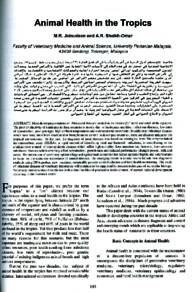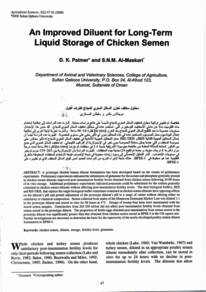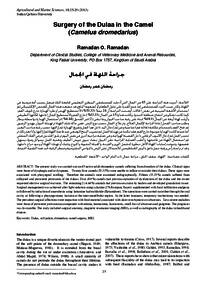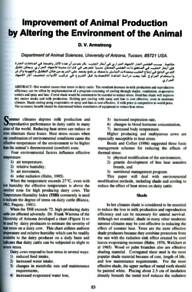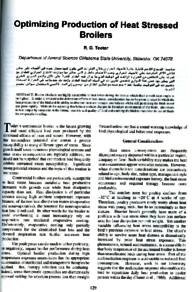وثيقة
Animal health in the tropics.
المساهمون
Sheikh-Omar, A. R., مؤلف
الناشر
Sultan Qaboos university
ميلادي
1996
اللغة
الأنجليزية
الملخص الإنجليزي
Most developing countries in Africa and Asia are located in the tropics (23° north and south of the equator). The poor productivity of ruminants in these countries is mostly due to inadequate nutrition, infectious diseases, low rates of reproduction, poor genotype, high ambient temperatures and socioeconomic constraints. In addition to infectious diseases which have long since been eradicated or brought under control in developed countries, there are diseases unique to the tropical environment. In the past, the diagnosis of most diseases was based on serological tests. The enzyme-linked immunosorbent assay (ELISA), a rapid method of identifying viral and bacterial infections, is contributing to the eradication or control of most epidemic diseases which inflict high mortality Less attention has, however, been given to subclinical diseases which adversely affect reproduction, growth rates and reduced performance (draught power, milk and meat). The interaction of veterinary epidemiology and agricultural economies has helped epidemiologists and veterinarians to focus on the economic importance of animal diseases. The emerging trends in animal health include new diagnostic methods using DNA probes, new vaccines, sustainable parasite control schemes and herd health monitoring. The study of infectious diseases of veterinary importance will continue to be supported by modern techniques of molecular biology. Veterinary curricula should emphasise both animal health and production in the context of current national development occurring in the livestock sector.
المجموعة
ISSN
2410-1079
URL المصدر
zcustom_txt_2
Jainudeen, M. R., & Sheikh-Omar, A. R. (1996). Animal health in the tropics. Journal of the College of Arts and Social Sciences, 1 (1), 103-110.
الملخص العربي
تقع معظم الدول النامية في أفريقيا وآسيا في المناطق الحارة ( 23 درجة شمال وجنوب خط الاستواء) وترجع الإنتاجية المتدنية في المجترات في هذه البلاد إلى الأسباب الآتية : التغذية غير الكافية، والأمراض المعدية، ومعدلات التناسل المنخفضة، والتركيب الوراثي الفقير، ودرجة الحرارة العالية والمعوقات الاجتماعية والاقتصادية. بالإضافة إلى الأمراض المعدية والتي تم التخلص منها أو السيطرة عليها منذ فترة طويلة في البلاد المتطورة. هناك أمراض أخرى خاصة بالمناطق الحارة فقط. كان يتم تشخيص معظم الأمراض في الماضي عن طريق الوسائل المختبرية. أسهمت الطريقة المختبرية السريعة باستخدام الممتص المناعي المرتبط بالأنزيمات (إلايزا) للكشف عن الأمراض الفيروسية والبكتيرية في القضاء على أو التخلص من الأمراض الوبائية - التي تتسبب في معدل وفيات عال. ولكنه من الملاحظ أن هناك اهتمام أقل بالأمراض تحت الإكلينيكية التي تؤثر سلبا على التناسل ومعدلات النمو ونقص الأداء (قوة الجر وإنتاج الحليب واللحم). وساعد التفاعل بين علم الوبائيات البيطري والاقتصاد الزراعي أخصائي الوبائيات والأطباء البيطريين في التركيز على الأهمية الاقتصادية لأمراض الحيوان. تتضمن التقنيات الجديدة في مجال صحة الحيوان اليوم أساليب تشخيص حديثة حيث تستخدم مجسمات الحامض النووي واللقاحات الجديدة وبرامج السيطرة المستمرة على الطفيليات ومتابعة صحة القطيع. ستستمر البحوث في الأمراض المعدية ذات الأهمية البيطرية في الاعتماد على التقنيات الحديثة في مجال البيولوجيا الجزيئية، لذا يجب أن تركز مقررات الدراسة البيطرية على صحة الحيوان والإنتاج الحيواني في إطار التنمية الوطنية في القطاع الحيواني.
قالب العنصر
مقالات الدوريات

